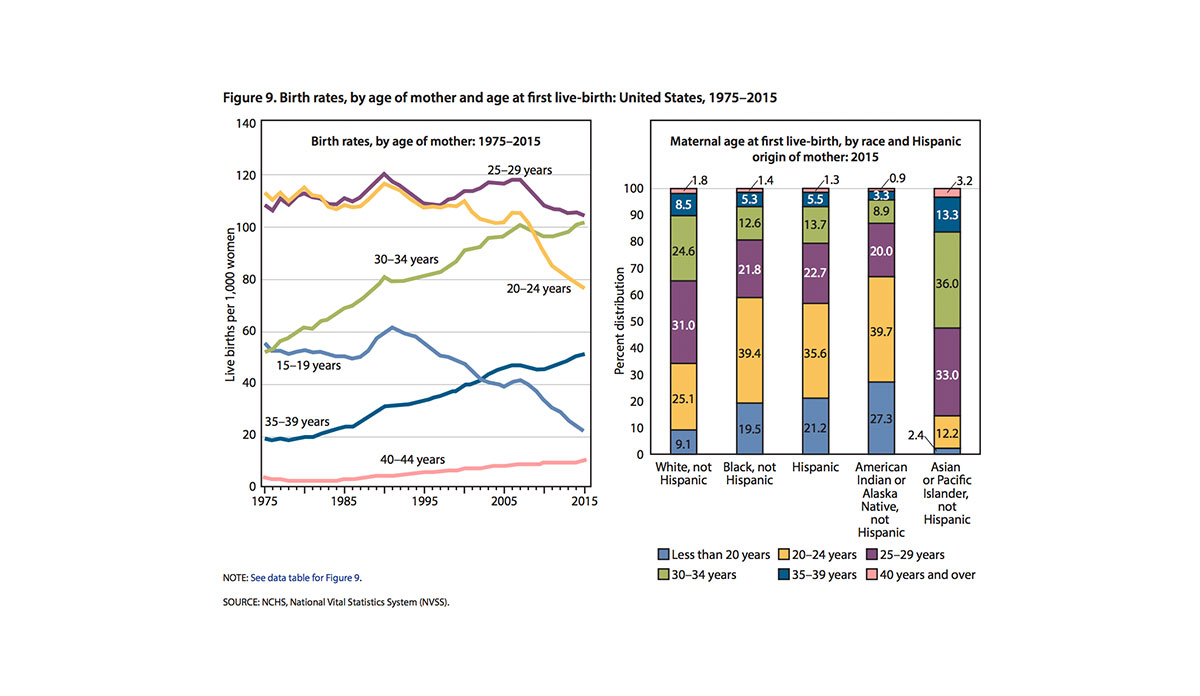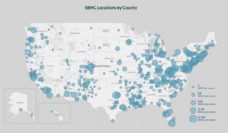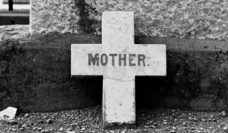The most recent United States Health Report was released by the Center for Disease Control and Prevention in May, and it reveals that shifting social and cultural norms continue to alter patterns of motherhood.
There has been a significant drop-off in women having their first babies before 30 years of age, with the sharpest decline occurring for teenagers (dropping 64% between 1991 and 2015). The rate of women having babies for the first time in their 30s has risen steadily since 1975.
These rates vary dramatically by race. Only 2.4% of Asian or Pacific Islander teenagers are having babies at that age, with most waiting until after 30 to have their first child. In sharp contrast, 87% of American Indian or Alaska Native mothers have had their first child by the time they reach 30 years, 27.3% of whom are teenagers. Rates of younger pregnancies hover around 80% for Black and Hispanic mothers as well. 35% of White mothers have their first child after 30.
The report cites educational attainment and contraceptive use as having a strong influence on the changing scope of motherhood. However, more research must be done on the public health implications of the racial differences within these shifting trends. Data has shown, for instance, that delaying birth is associated with higher salaries for women and healthier birth outcomes, factors that can further exacerbate racial disparity.
Databyte via Health, United States, 2016. U. S. Department of Health and Human Services.













